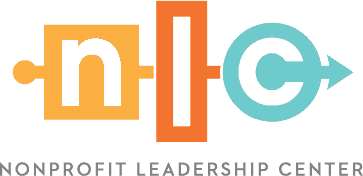How many times have you and your colleagues analyzed questions that still have no clear answers: How do we recoup the revenue lost from our cancelled fundraising events? What will the year-end giving season look like? What is the long-term impact on our staff and operations?
In our data-driven world, we’re used to having the numbers and analytics at our fingertips to make decisions. Yet today, with everything we’ve ever known and come to rely on turned upside-down — data, experience, instincts — effective planning and outcome predictions have been challenging, to say the least.
As nonprofit leaders continue to look ahead with creativity and innovation, new data is emerging that provides four timely insights to help you move your mission forward.
4 Data Insights to Keep Nonprofits Moving Forward
1. Humans are still wired to give. Keep inviting them to do so.
While the fundraising climate may feel dire right now, Americans are still ready and willing to give back.
- Even amid a public health pandemic, recession, civil unrest and a divisive political climate, a recent study by Fidelity Charitable found that 43% of donors plan to continue supporting their usual charities.
- The latest Blackbaud Institute Index found that 25% of donors plan to increase their donations, while 54% plan to maintain their giving levels.
- Americans who have been laid off or furloughed are among the most likely to donate (62%), according to LendingTree research.
- Across all nonprofit subsectors, there has been a 36% increase in online giving year-over-year from April through June 2020 compared to the same time period in 2019 (Blackbaud Institute Index). Significant jumps during May suggest a shift to digital platforms and momentum from GivingTuesdayNow (May 5, 2020).
To tap into the best of our human spirit, continue inviting donors to support your organization with a clear case for support and a compelling call to action that’s centered on them and the impact they can make, not your organization and its fundraising goals or struggles.
2. Donors want to solve immediate problems. Highlight urgent needs and how they are a key partner in addressing them.
While Americans are continuing to give during this time of uncertainty, their giving behavior has shifted.
- More than one-third (37%) of Americans say they have changed their charitable giving behavior in recent months. (LendingTree)
- 25% of Americans say they will give to different organizations that are responding to COVID-19 (Fidelity Charitable). Gen Z and Millennials reported coronavirus support as their top charitable cause in June 2020 (LendingTree).
- Giving to every nonprofit sub-sector was down in Q2 2020 from the previous year, with the exception of Human Services organizations which are up 9.3% from Q2 2019 to Q2 2020.
This shift is underscored by LendingTree data that shows people are donating to areas of urgent need over causes they say are closest to their hearts. For instance, while only 12% of respondents say food banks are their top cause, 23% said they’ve donated to a food bank in 2020.
Donors want to help solve important and urgent problems. To be relevant in your messaging and fundraising appeals, ensure your supporters understand how they can help address urgent needs connected to the challenges we’re all experiencing, even if you’re not providing direct COVID-19 relief.
3. Make relationships your top priority — and cultivate them consistently.
Strong relationships are the one thing that no global pandemic or cancelled event can destroy. Retaining donor relationships is one of the most important factors in fundraising success. While you shouldn’t be afraid to be transparent about the challenges your organization may be facing and what’s at stake for those you serve, stay focused on communicating how donors are making a tangible impact. From regular emails that show results and real stories of people who have benefitted in this time of need to personal calls and hand-written letters to your top supporters, take time to nurture and grow your relationships with authenticity, empathy, optimism and confidence.
Additionally, with 43% of donors planning to continue their support of current charities (Fidelity Charitable), focus on efforts to convert one-time donors into monthly sustainers as you plan your future strategies.
4. How you communicate matters. Be intentional, and not just externally.
Effective communication, both internally and externally, can make or break organizations right now. Surprisingly, one-third of Americans say they don’t have enough information to understand where they can direct their support effectively (Blackbaud Institute Index). Helping donors understand how their support makes an impact is something you can control when so much feels beyond our control. Consider these additional factors:
Prioritize online excellence: You don’t always have to spend money to ensure the digital front door to your organization is inviting. Optimize high-traffic web pages, maximize your Google Ad Grant, test your emails and do more of what works best, consider your technology landscape and ensure that it supports virtual giving at its core. Stop spending money on digital ads unless you’re producing a positive return.
- Fill your funnel with social media: Social media spurs many young Americans to donate. Roughly 52% of Gen Z and 45% of millennials have donated to a cause this year after hearing about it on social media (LendingTree). Make sure your social media content brings your mission to life through an array of stories, images, news, collaborative dialogue and more. Balance your asks (20% of content) with information that delivers direct value to your audience (80% of content).
- Capitalize on year-end giving season: The upcoming presidential electionwill coincide with the start of year-end fundraising campaigns, which could fuel charitable activity. The CARES Act of 2020 reinstated a $300 charitable deduction for one year. This may encourage low- and mid-level donations by a comparable amount as many individuals race to give to the causes of their choice. These effects may amplify as the effects of widespread unemployment and federal relief continue in the wake of the pandemic.
- Stay connected across teams so you can respond with agility: It has never been more important for your internal departments and teams to be integrated. Your capacity for embracing innovative solutions to new challenges will rely on your team’s ability to stay connected. Internal communication is as equally important as external communication right now.
While 2020 has been a fundraising year like no other, your mission is still as important today as it was when the year began. Focus on relationships, identify areas of greatest opportunity, communicate with your donors and optimize your resources so you can be in a strong position to remain stable and reap future rewards.
Secure Your Organization’s Strong Future
Even amid continued uncertainty, ensure your leadership never wavers. From board governance and financial management to fundraising, communications and leadership, nonprofit training workshops and virtual courses from the Nonprofit Leadership Center will help you lead courageously into the year ahead.


